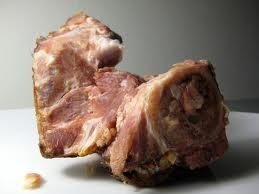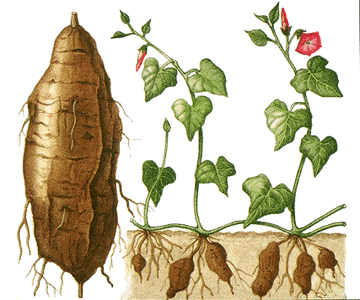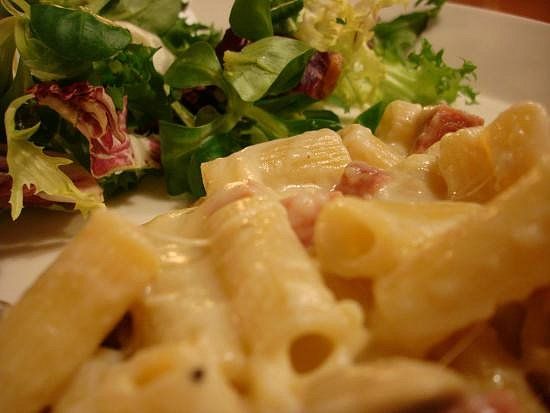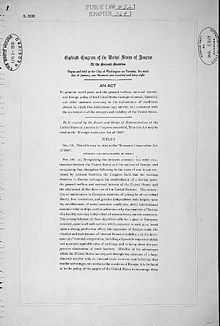Republished from April 25, 2011
 The holiday is over, besides the candy, you most likely have a refrigerator full of leftovers and one of them may be a ham bone. Don’t throw it out just yet, there is still another use for it, soup. Served with a salad and a hearty bread, these soups make a hearty, nutritional meal meal that is also budget conscious. Accompanied by a good beer, this is real comfort food on a chilly Spring evening.
The holiday is over, besides the candy, you most likely have a refrigerator full of leftovers and one of them may be a ham bone. Don’t throw it out just yet, there is still another use for it, soup. Served with a salad and a hearty bread, these soups make a hearty, nutritional meal meal that is also budget conscious. Accompanied by a good beer, this is real comfort food on a chilly Spring evening.
One soup recipe that uses a ham bone has been served in the US Senate for over 100 years. The current version does not include potatoes but I like tradition in this case. I also would add a cheese clothe sachet of bay leaf, parsley, peppercorn and thyme for flavor. I also use chicken broth in place of the water. You can play with your own seasoning to taste.
United States Senate Bean Soup
 1 lb. dry navy beans
1 lb. dry navy beans
1 ham bone with meat
Soak beans overnight in 3 quarts water. Drain. In a large soup pot put ham bone and beans. Add 2 quarts cold water and simmer for 2 hours. Add:
4 cups mashed potatoes, minimum (more makes soup thicker)
3 medium onions, chopped
2 garlic buds, minced
2 stalks celery, chopped
4 tbsp. fresh parsley, chopped
1 tsp. salt (optional)
1/4 tsp. pepper
Simmer all for 1 hour more.
And then there is the real traditional that has been around forever. There are numerous versions of this recipe, this one uses ham hocks but the left over ham bone can be substituted.
Split Pea Soup with Pumpernickel Croutons
Ingedients:
2 meaty ham hocks (1 3/4 lb total)
16 cups water
4 large carrots
1 large onion, chopped
2 celery ribs, chopped
5 tablespoons olive oil
1 lb dried split peas (2 1/4 cups), picked over and rinsed
1 teaspoon table salt
1/4 teaspoon black pepper
5 cups 1/2-inch cubes pumpernickel bread (from a 1 1/4-lb loaf)
1 teaspoon kosher salt
1 cup frozen peas (not thawed)
Preparation:
Simmer ham hocks in 16 cups water in a deep 6-quart pot, uncovered, until meat is tender, 1 1/2 to 2 hours.
Transfer ham hocks to a cutting board and measure broth: If it measures more than 12 cups, continue boiling until reduced; if less, add enough water to total 12 cups. When hocks are cool enough to handle, discard skin and cut meat into 1/4-inch pieces (reserve bones).
Chop 2 carrots and cook along with onion and celery in 2 tablespoons oil in a 6- to 8-quart heavy pot over moderate heat, stirring, until softened, 6 to 8 minutes. Add split peas, table salt, pepper, ham hock broth, and reserved bones and simmer, uncovered, stirring occasionally, until peas are falling apart and soup is slightly thickened, about 1 1/2 hours.
Put oven rack in middle position and preheat oven to 400°F.
While soup simmers, toss bread with remaining 3 tablespoons oil and kosher salt in a large bowl, then spread in 1 layer in a large shallow baking pan and bake until crisp, about 10 minutes. Cool croutons in pan on a rack.
Halve remaining 2 carrots lengthwise, then cut crosswise into 1/4-inch-thick slices. Remove bones from soup with a slotted spoon and discard. Add carrots and ham pieces to soup and simmer, uncovered, until carrots are tender, 10 to 15 minutes. Add frozen peas and simmer, uncovered, stirring, until just heated through, about 3 minutes. Season with salt.
Serve soup with croutons.
Cooks’ notes:
· Croutons can be made 3 days ahead and cooled completely, then kept in an airtight container at room temperature.
· Soup is best when made, without frozen peas, 1 day ahead (to give flavors time to develop). Cool completely, uncovered, then chill, covered. Reheat and, if necessary, thin with water. Stir in frozen peas while reheating.


 I love sweet potatoes and not just at Thanksgiving. I like them baked, boiled and mashed and dipped in tempura batter and fried. They are great in breads and baked desserts. They are very nutritional, an excellent source of vitamin A and a good source of potassium and vitamin C, B6, riboflavin, copper, pantothetic acid and folic acid. Sweet potatoes are native to Central America, grown in the Southern US states since the 16th century and are in the same family of plants as Morning Glories. The plant is a trailing vine with a large tuberous root.
I love sweet potatoes and not just at Thanksgiving. I like them baked, boiled and mashed and dipped in tempura batter and fried. They are great in breads and baked desserts. They are very nutritional, an excellent source of vitamin A and a good source of potassium and vitamin C, B6, riboflavin, copper, pantothetic acid and folic acid. Sweet potatoes are native to Central America, grown in the Southern US states since the 16th century and are in the same family of plants as Morning Glories. The plant is a trailing vine with a large tuberous root.
 In case you still have a few slices of that ham left and are truly sick of ham sandwiches, don’t let it go to waste. Here’s an easy recipe that can make use of those last few slices.
In case you still have a few slices of that ham left and are truly sick of ham sandwiches, don’t let it go to waste. Here’s an easy recipe that can make use of those last few slices. The holiday is over, besides the candy, you most likely have a refrigerator full of leftovers and one of them may be a ham bone. Don’t throw it out just yet, there is still another use for it, soup. Served with a salad and a hearty bread, these soups make a hearty, nutritional meal meal that is also budget conscious. Accompanied by a good beer, this is real comfort food on a chilly Spring evening.
The holiday is over, besides the candy, you most likely have a refrigerator full of leftovers and one of them may be a ham bone. Don’t throw it out just yet, there is still another use for it, soup. Served with a salad and a hearty bread, these soups make a hearty, nutritional meal meal that is also budget conscious. Accompanied by a good beer, this is real comfort food on a chilly Spring evening. 1 lb. dry navy beans
1 lb. dry navy beans





 On this day in 1948,
On this day in 1948, 
Recent Comments